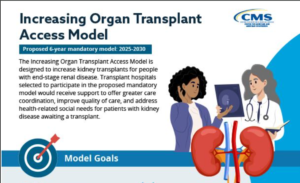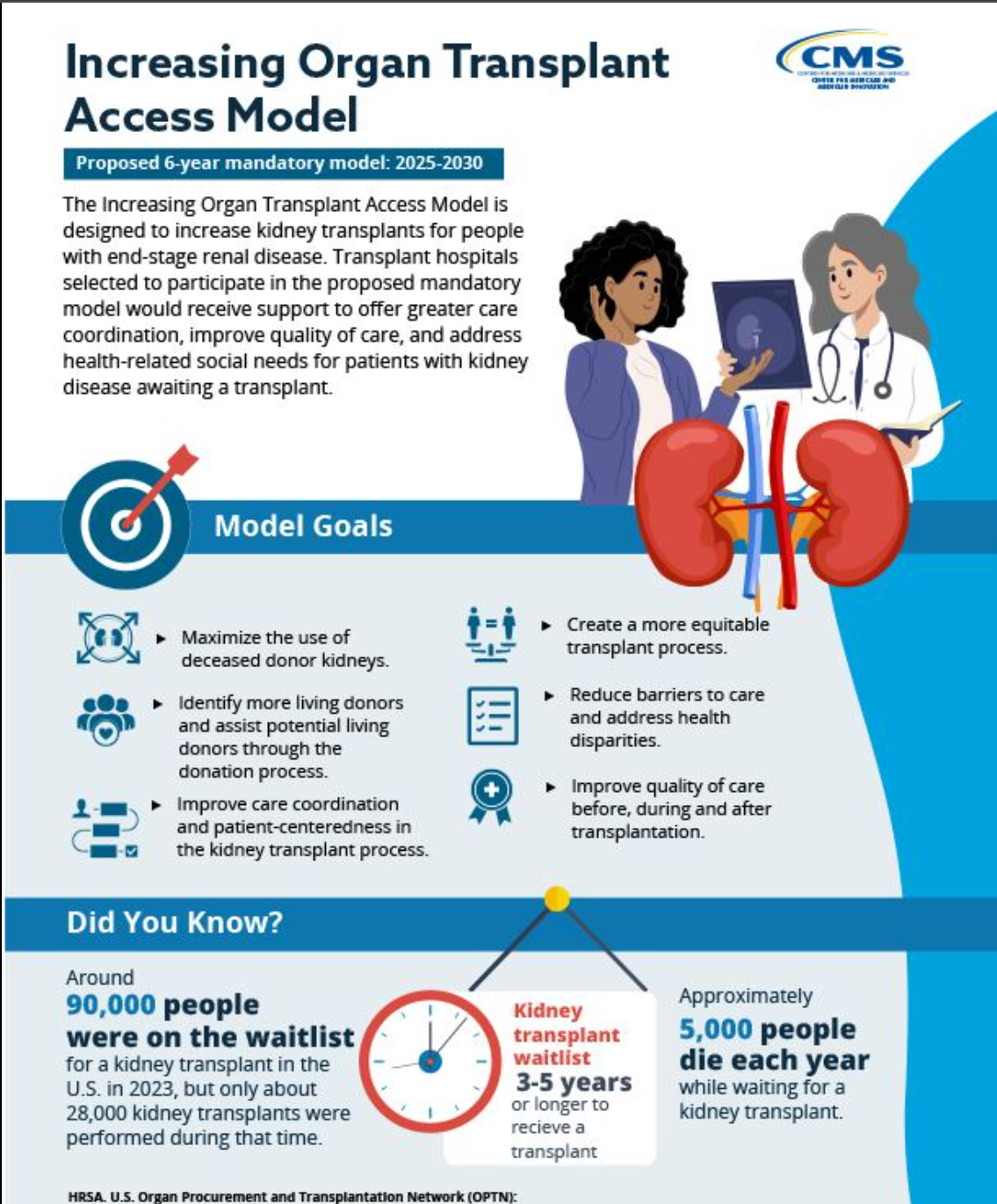 Increasing Organ Transplant Access (IOTS) Model. Medicare 2025-2030. Key Takeaways:
Increasing Organ Transplant Access (IOTS) Model. Medicare 2025-2030. Key Takeaways:New performance metrics will serve as the basis for the proposed incentive payments, with three categories assigned a score totaling 100 possible points.
For example, each performance year, a participating kidney transplant hospital will fall into one of three categories based on their final score as follows:
-
Final score of 60 or greater: Hospitals will RECEIVE A LUMP SUM UPSIDE RISK PAYMENT from CMS equal to the final performance score minus 60, then divided by 60, then multiplied by $8,000, then multiplied by the number of kidney transplants to attributed patients with Medicare as their primary or secondary payer during the performance year.
-
For example, a hospital that performed 150 qualifying kidney transplants and received a final score of 85 would receive a $500,000 lump sum payment under the proposed incentive calculus.
-
-
Final score between 41 and 59: Hospitals in this performance range will be considered neutral and will not receive any lump sum payments or be required to make any payments to CMS.
-
Final score of 40 or lower: HOSPITALS WILL OWE CMS a lump sum downside risk payment equal to the participant’s final performance score minus 40, then divided by 40, then multiplied by -$2,000, then multiplied by the number of kidney transplants to attributed patients with Medicare as their primary or secondary payer during the performance year.
-
For example, a hospital that performed 150 qualifying kidney transplants and received a final score of 35 would owe CMS $37,500.
-
Downside risk payments will be required only after the second performance year
-
https://www.federalregister.gov/documents/2024/05/17/2024-09989/medicare-program-alternative-payment-model-updates-and-the-increasing-organ-transplant-access-iota

Like
Comment
Send

